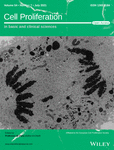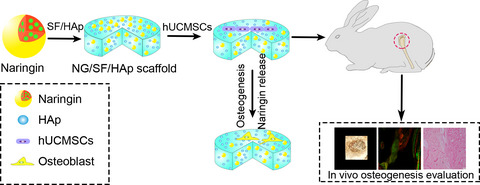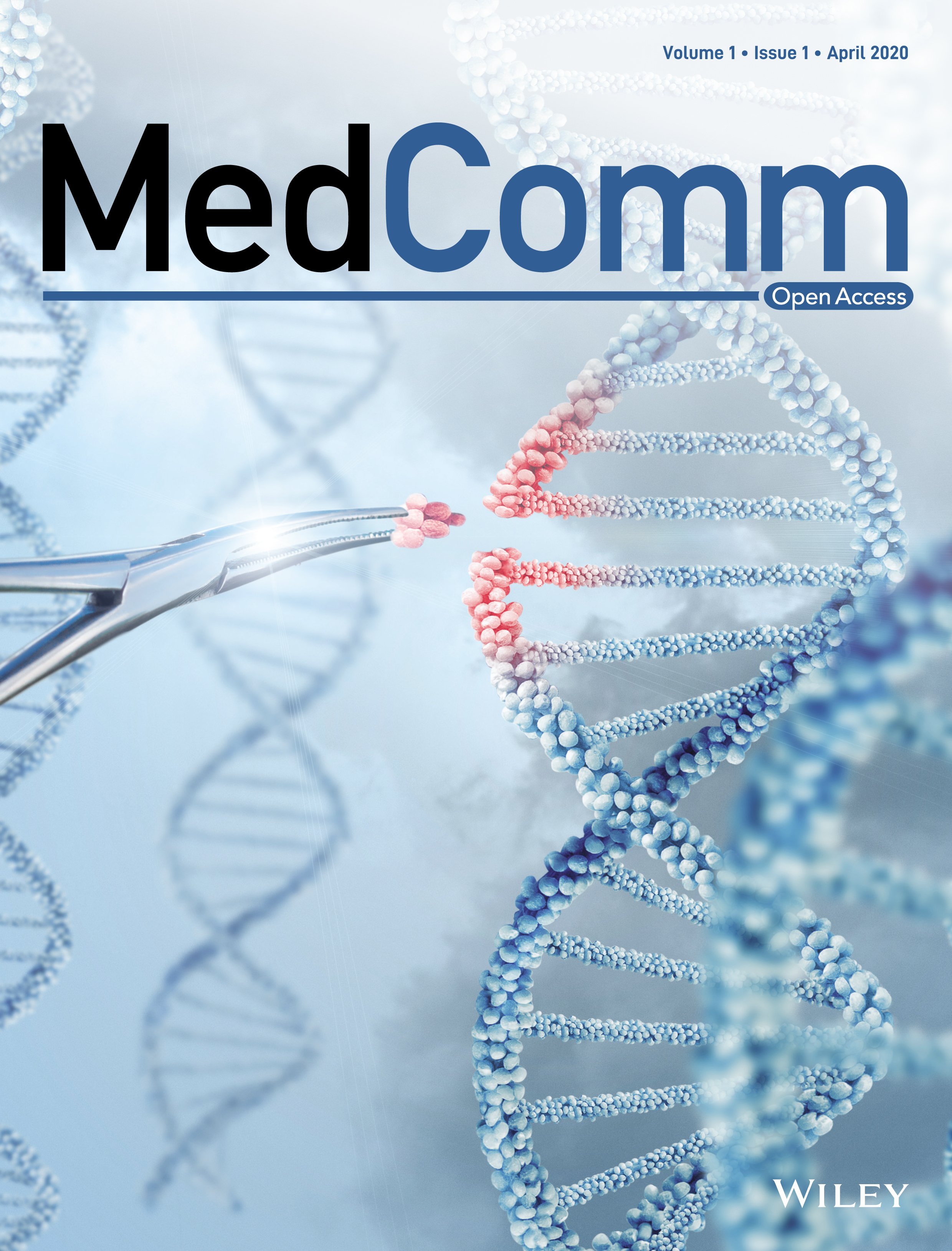Journal list menu
Export Citations
Download PDFs
ISSUE INFORMATION
REVIEWS
NF-κB signalling pathways in nucleus pulposus cell function and intervertebral disc degeneration
- First Published: 24 May 2021
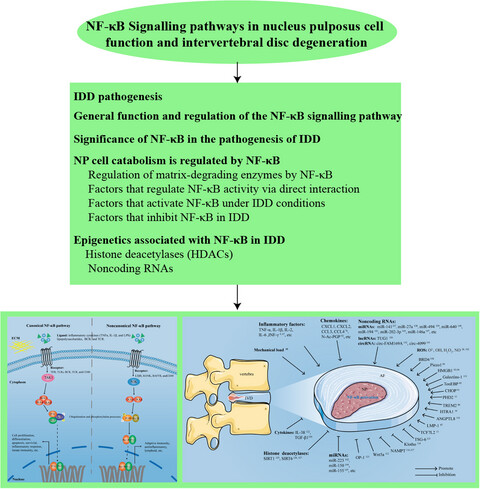
Intervertebral disc degeneration (IDD) is a common clinical degenerative disease of the spine. A series of factors, such as inflammation, oxidative stress, and mechanical stress, promote degradation of the extracellular matrix (ECM) of the intervertebral discs (IVD), leading to dysfunction and structural destruction of the IVD. Nuclear factor-κB (NF-κB) transcription factor has long been regarded as the pathogenic factor of IDD. Therefore, NF-κB may be an ideal therapeutic target for IDD. As NF-κB is a multifunctional functional transcription factor with roles in a variety of biological processes, a comprehensive understanding of the function and regulatory mechanism of NF-κB in IDD pathology will be useful for the development of targeted therapeutic strategies for IDD, which can prevent the progression of IDD and reduce potential risks. This review discusses the role of the NF-κB signalling pathway in the nucleus pulposus (NP) in the process of IDD to understand pathological NP degeneration further and provide potential therapeutic targets that may interfere with NF-κB signalling for IDD therapy.
Role of CXCR4 in the progression and therapy of acute leukaemia
- First Published: 29 May 2021
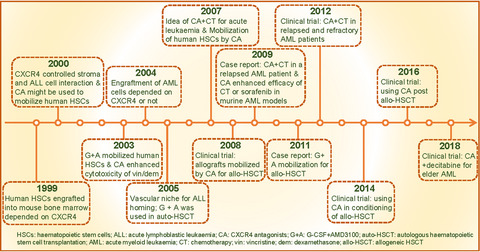
CXCR4 is expressed on leukaemia cells and its ligand stromal-derived factor 1 (SDF-1) is produced by stromal cells in the bone marrow. The SDF-1/CXCR4 axis plays an important role in homing to and retention in bone marrow of leukaemia cells. During the last three decades, CXCR4 has been studied as a potential target for treatment of acute leukaemia.
ORIGINAL ARTICLES
Dermal papilla cells and melanocytes response to physiological oxygen levels depends on their interactions
- First Published: 08 June 2021
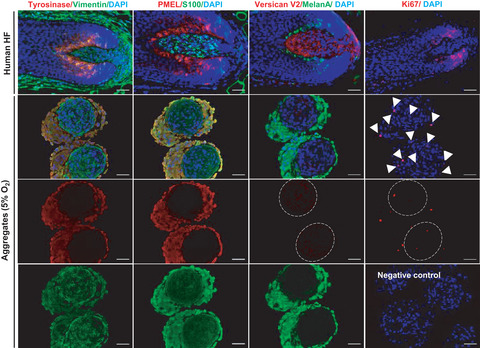
Under physiological oxygen levels (5% O2, physoxia), both the highly specialized human dermal papilla (DP) cells and melanocytes (hMel) show increased proliferative capacity and functionality than under atmospheric oxygen levels (21% O2). Interestingly, DP cells and hMel response to physoxia varied not only if in co-culture, but also whether they were interacting indirectly or directly. When hMel and DP cells were directly contacting in organized 3D cell aggregates that better resembled the HF microarchitecture and respective phenotype, the microenvironment recreated under physoxia better favoured their highly specialized functions.
Adult neurogenic process in the subventricular zone-olfactory bulb system is regulated by Tau protein under prolonged stress
- First Published: 14 May 2021
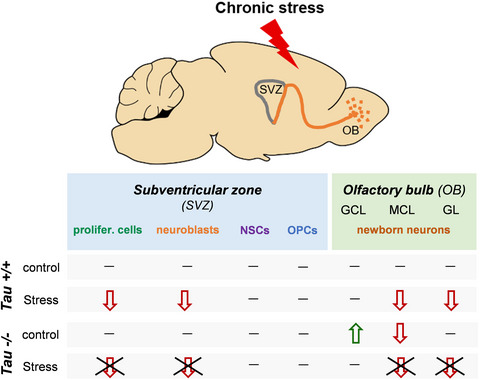
Despite Tau and its malfunction is increasingly related to deficits of adult brain plasticity under pathological conditions [ e.g. Alzheimer's disease (AD)], it remains unknown whether Tau plays a role in neurogenic process of the subventricular zone-olfactory bulb system under conditions of chronic stress, a well-known sculptor of brain and a risk factor for AD. We hereby demonstrate for the first time that loss of Tau blocks the stress-evoked suppression of proliferating cells and neuroblasts, but not oligodendrocyte progenitors, in the SVZ leading to reduced newborn neurons in olfactory bulb of adult brain.
Naringin-inlaid silk fibroin/hydroxyapatite scaffold enhances human umbilical cord-derived mesenchymal stem cell-based bone regeneration
- First Published: 19 May 2021
Hypertrophic Preconditioning Attenuates Myocardial Ischaemia-Reperfusion Injury by Modulating SIRT3-SOD2-mROS-Dependent Autophagy
- First Published: 11 May 2021

Hypertrophic preconditioning exerted marked protective effects by eliminating mitochondrial-derived superoxide and suppressing autophagic cell death. SIRT3 partially mimicked the effects of hypertrophic preconditioning, whereas genetic ablation of SIRT3 in mice blocked the cardioprotective effects of hypertrophic preconditioning.
A novel mouse model for liver metastasis of prostate cancer reveals dynamic tumour-immune cell communication
- First Published: 21 May 2021
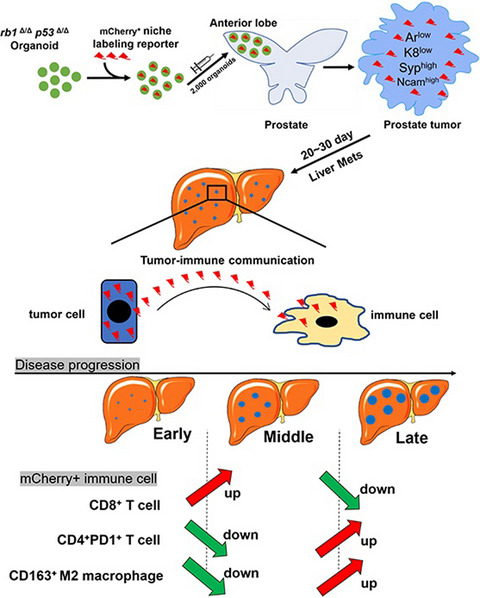
Liu et al. developed a rapid and immune sufficient mouse model for liver metastasis of prostate cancer via orthotopic injection of organoid cultures from PbCre+; rb1f/f;p53f/f mice. Using a niche-labeling lentiviral reporter, a dynamic tumor-immune cell communication at different phases in the liver metastatic niche is depicted. A paucity of CD8+ T cells and abundant PD1+ CD4+ T cells and CD163+ M2 macrophages contribute to an immune suppressive liver metastatic niche.
Cathepsin K deficiency promotes alveolar bone regeneration by promoting jaw bone marrow mesenchymal stem cells proliferation and differentiation via glycolysis pathway
- First Published: 30 May 2021
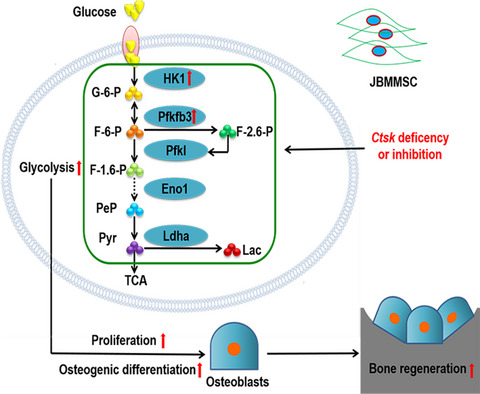
Ctsk knockout or pharmacal inhibition could up-regulate coding genes of key enzymes in glycolysis including Pfkfb3 and HK1, which promote glycolysis in JBMMSC. Thus, the enhanced glycolysis contribute significantly to the proliferation and osteogenic differentiation of JBMMSC, and finally promote alveolar bone regeneration.
Genome stabilization by RAD51-stimulatory compound 1 enhances efficiency of somatic cell nuclear transfer-mediated reprogramming and full-term development of cloned mouse embryos
- First Published: 21 May 2021
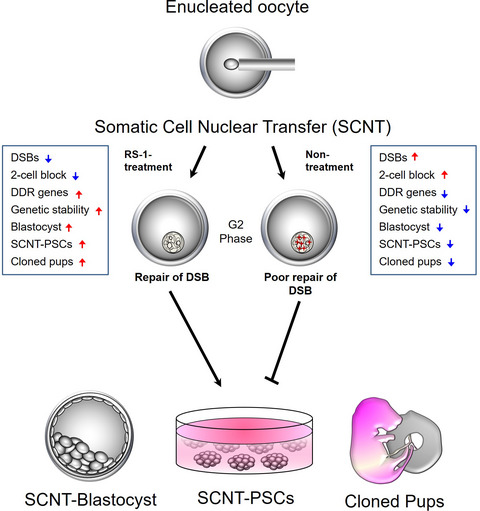
We determined the effect of upregulation of Rad51 homologous 1 (RAD51) by treatment with RAD51-stimulatory compound 1 (RS-1) on the role of DSB repair during somatic cell nuclear transfer (SCNT) reprogramming and the improvement of embryonic development by reducing DNA damage. Therefore, supplementation with RS-1 during reprogramming can recover RAD51 activity and improve the derivation efficiency of PSCs, and would be an efficient, safe and simple protocol for improving the efficacy of SCNT technology.
EZH2-mediated inhibition of KLF14 expression promotes HSCs activation and liver fibrosis by downregulating PPARγ
- First Published: 24 May 2021
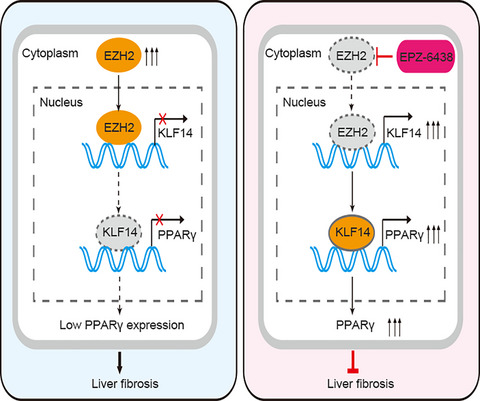
Upon HSCs activation, the elevated EZH2 mediates suppression of KLF14 expression, which promotes HSCs activation and liver fibrosis by downregulating PPARγ. The EZH2 inhibitor EPZ-6438 rescues EZH2-mediated KLF14 downregulation, which transactivates PPARγ expression, converts the activated HSCs to the quiescent phenotype and induces apoptosis, and therefore alleviating liver fibrosis.
Activation of Wnt signalling reduces the population of cancer stem cells in ameloblastoma
- First Published: 06 June 2021
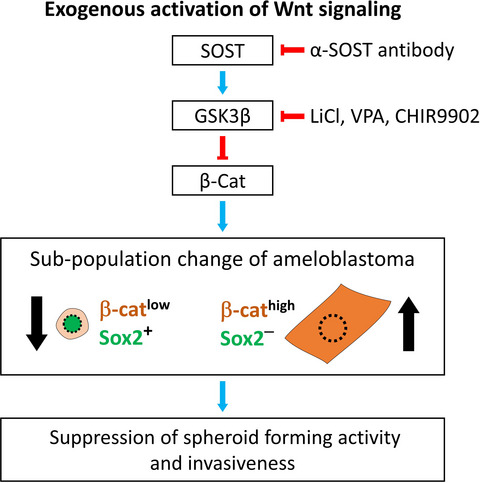
Ameloblastoma, a benign tumour of the odontogenic epithelium, presents significant recurrence rates and resistance to radiotherapy and chemotherapy, which compel patients to undergo radical resections, potentially causing surgical morbidity. In this study, we found that the exogenous activation of Wnt signalling using antibody (α-SOST antibody) or chemicals (LiCl, VPA or CHIR9902) increases β-catenin (β-cat) in ameloblastoma, leading to an increase in β-cathigh and Sox2- cells and decrease in β-catlow and Sox2+ cells, the putative cancer stem cells (CSCs). This change of sub-population in ameloblastoma results in the suppression of spheroid-forming activity and invasiveness. The results suggest that Wnt signalling activators may serve as potential drug candidates to suppress CSCs in ameloblastoma.
SHED aggregate exosomes shuttled miR-26a promote angiogenesis in pulp regeneration via TGF-β/SMAD2/3 signalling
- First Published: 07 June 2021
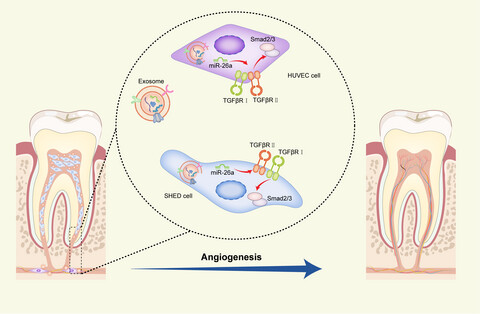
The underlying mechanisms of the SHED aggregate involved in pulp regeneration is revealed in this paper. SHED aggregate-derived exosomes (SA-Exo) shuttled miR-26a promote SHED endothelial differentiation and enhance the angiogenic ability of HUVECs via TGF-β/SMAD2/3 signalling, which contributing to angiogenesis in pulp tissue regeneration.
Probiotics ameliorate alveolar bone loss by regulating gut microbiota
- First Published: 07 June 2021
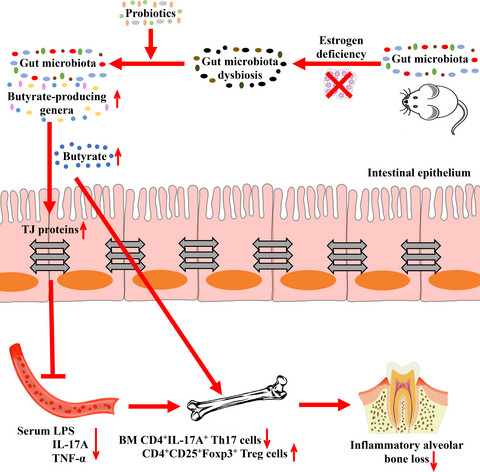
Probiotics can promote intestinal barrier function by rescuing - gut microbiota dysbiosis in estrogen-deficient rats, which further suppressed the systemic inflammatory status and restored bone marrow Th17/Treg balance and consequently ameliorated inflammatory alveolar bone loss caused by periodontitis and periapical periodontitis. BM, bone marrow; LPS, lipopolysaccharide.
Mass cytometry and transcriptomic profiling reveal body-wide pathology induced by Loxl1 deficiency
- First Published: 09 June 2021
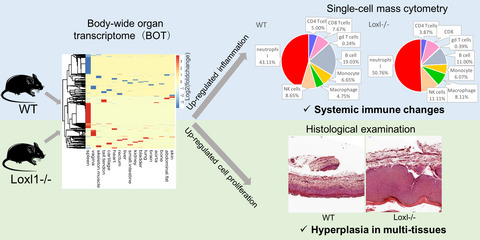
A new method for body-wide organ transcriptome profiling, combined with single-cell mass cytometry was developed to perform RNA-seq of 17 organs from both Loxl1 knockout and wide type (WT) mice reveal body wide pathology (including hyperplasia and infiltration of immune cells) induced by Loxl1 deficiency, which provided a powerful strategy to screen body-wide organ functions of a particular gene, and also illustrated important biological roles of LOXL1 on multiple organ cells and systemic immunity.
The intact parasympathetic nerve promotes submandibular gland regeneration through ductal cell proliferation
- First Published: 07 June 2021
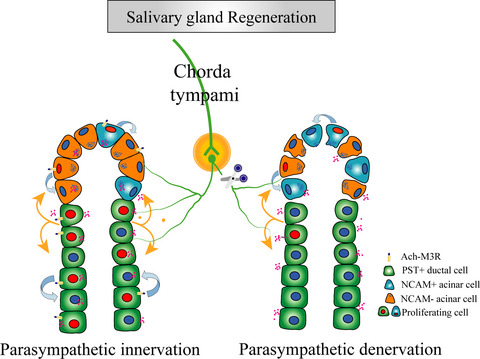
Intact parasympathetic nerve innervation promoted submandibular gland regeneration. The process of gland regeneration was significantly repressed by cutting off the parasympathetic nerve. During regeneration, the proliferating cells were mainly found in the ductal structures with parasympathetic innervation. On the contrary, almost no proliferative ductal cells were found in the denervation group. This differential pattern of cell proliferation is most associated with the increased expression of PST and NCAM.
A novel multikinase inhibitor SKLB-YTH-60 ameliorates inflammation and fibrosis in bleomycin-induced lung fibrosis mouse models
- First Published: 14 June 2021

Schematic model for anti-fibrotic activity of SKLB-YTH-60. In vitro YTH-60 inhibits the activation of fibroblasts and the EMT of epithelial cells induced by TGFβ1. Intraperitoneal injection of YTH-60 not only inhibits the bleomycin-induced lung inflammation, regulates the lung immune microenvironment, but also prevents and reverses pulmonary fibrosis. Finally, the anti-fibrosis effect of YTH-60 may be via inhibiting of FGFR and TGF-β/Smad signaling pathway.




